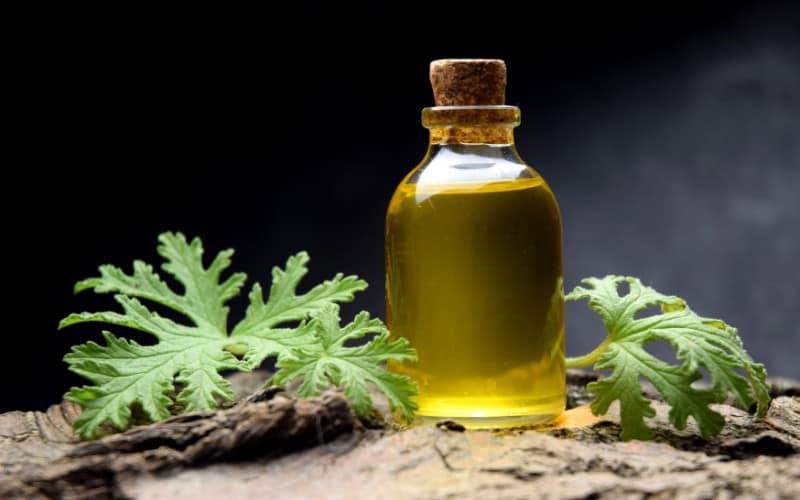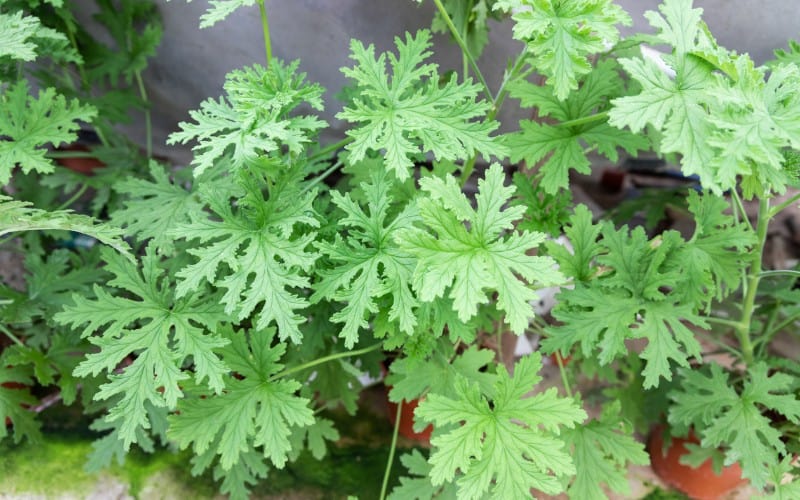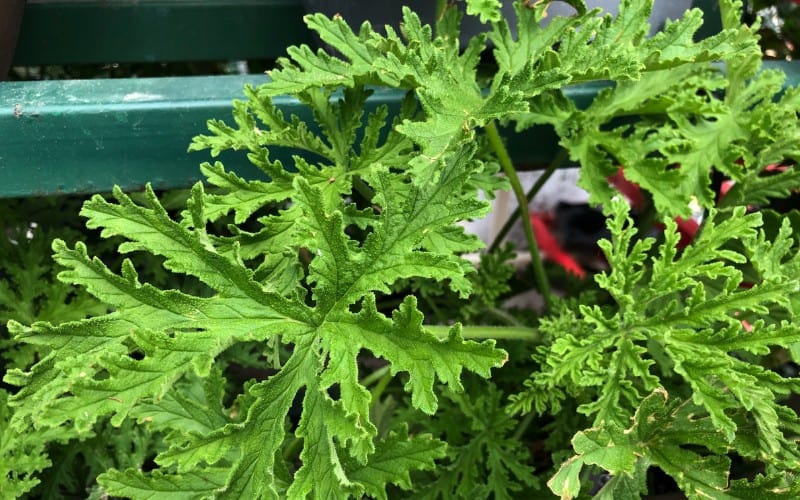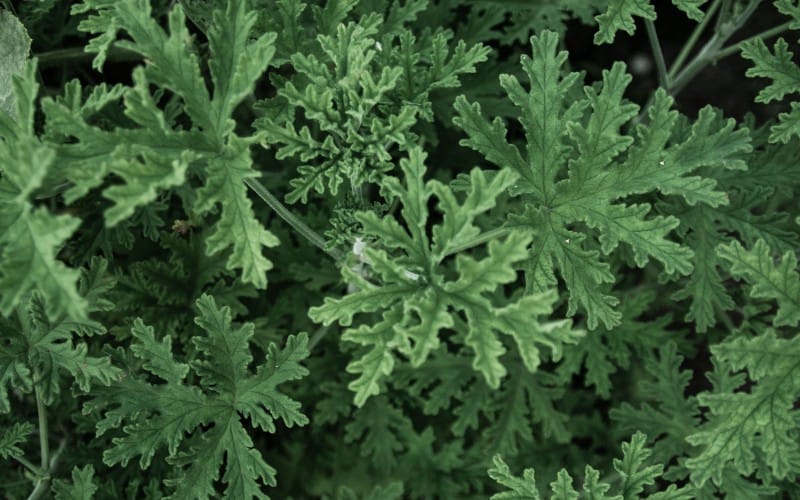Many gardeners praise the citronella plant as one of the most versatile and useful herbs known to man. Most people love to have it in their garden.
Most planters do not grow the citronella plant from the seeds. They usually purchase already grown ones from gardening centers, transplant, and then keep growing.
Some also grow the citronella grass because of its smell. It has a scent like lemon. The plant is perennial so it can last in your garden for years.
If you want to know more about this wonderful mosquito repellant plant and how to grow and care for it, that's precisely what this article will do for you.
Let's get started!
Table of Contents
What is Citronella Plant?
Citronella is the common name of the aromatic perennial plant with the scientific name Cymbopogon nardus. It is from the Poaceae family and originated from the tropics in Asia. The plant is the source of the popular citronella oil.
The citronella plant is tall, tufted, and perennial. The grass has leaf blades that are narrow. They are usually fifteen to thirty centimeters long and unbranched. Cymbopogon nardus grass has soft but long hairs covering it.
The principal medium of dispersal is by the movement of seeds. These seeds can proliferate rapidly after a fire outbreak. Wherever there is constant bush burning in the tropics, you will find citronella growing there.
Citronella is not suitable for humans to eat because it is unpalatable. It is also an invasive plant and can grow rapidly on vegetation. It will edge out other plants that are suitable for livestock to eat and cause them to starve.
Buffalos might eat the citronella sometimes, and elephants will only try it during the drought and dry season. Despite how exceptional the plant seems to be, it is an enemy to biodiversity because of its invasive nature.
Managing the rapid growth of the plant is one hell of a task. It takes a lot of money and labor to get rid of citronella as a weed.
It is even harder if there are other weeds present in the garden. The best way to control citronella is by making sure it does not grow in your garden in the first place.
If it is already growing, tackle it when it is still tender. The best time is before it produces seeds because if it produces seeds, control will be extremely hard as wind, pets and even the gardener can propagate the plant easily.
Does Citronella Actually Work?
Gardeners have touted citronella to have a lot of benefits. Almost every part of the plant has one thing people believe it is good for. The oil gotten from the seeds is essential oils. The grass is an insect repellent.
There are just so many speculations concerning the plant, but which is true, and which is untrue? Does citronella really possess all these superpowers that people accrue to it?
One insect that many people would want to repel at all costs is a mosquito. Everyone knows how deadly the insect is. First is the discomfort it causes when flying around, and second, it is a vector that carries many organisms that cause diseases in man and livestock.
Citronella oil is what many use to repel mosquitoes. We get it from two kinds of citronella grass. Even though it is safe for humans to use, as it poses a minimum risk as a pesticide, it does not mean that the oil is effective in getting rid of mosquitos.
The oil of this famous plant works by covering the scents that attract mosquitoes to human beings. Our body odor and the carbon (iv) oxide we exhale as humans attract mosquitoes.
This citronella oil helps to mask this smell. But this is only a hypothesis, and no study has actually proven that this works.
In 2011, an article published in a malaria journal checked for the effectiveness of the oil. It pointed out that the oil is quite popular as an insect repellent even as far back as the times of the Greeks and Romans.
Citronella has become one of the most popular insect repellent sought after by people.
The scholarly article opined repellents made with citronella are only effective for approximately two hours and this is because the citronella oil evaporates quickly.
The study also considered the use of citronella candles, but the results showed the candles are effective for less than 50 percent.
The author further advised that people who are moving to endemic areas should not rely on citronella candles or oils.
Does Citronella work? Yes, but only to a certain minimal degree. The amount in the candles is not enough to do the repelling work properly.
A candle only has 5 percent of citronella concentration. And to further prove that one should not trust citronella as an insect repellent, the US CDC doesn’t name citronella as one of the mosquito repellents it recommends.
Read Also: How Close Can You Plant Herbs Together?
Is Citronella Hard To Grow?
Citronella is not actually hard to grow. Since it is an invasive species, the growth and propagation are actually rapid. In fact, if you do not take care, the plant will overrun your garden. What you should worry about actually with the citronella is how to control its growth.
True citronella, just as most people call the citronella grass, has a huge concentration of essential oil. The citronella grass is not very popular within homes.
Citronella geranium is one that you can readily find in homes and flower stores. However, when you lay your hand on citronella grass, bear the following things in mind when you are planting them.
- Ensure that you have a wide space for the plant to grow. The plant can grow as tall as 6 feet and as wide as 6 feet too. So space the plant out.
- Even though the citronella is a tropical plant, plant it in a place where there is indirect sunlight. If you live in a cold climate, plant the citronella in a pot and then take it inside before the first frost.
- Whether you plant the citronella outside or inside, make sure you water daily.
How to Grow Citronella Plant
Gardeners can propagate the citronella plant by cuttings or seeds. Scientists call the former sexual reproduction while they call the latter an asexual form of reproduction.
Propagating the plant with seeds is a superb choice; however, it takes more time to grow than when you use a cutting. In fact, except for citronella occurrence in the wild, most people grow the plant from the cuttings.
You can get the cutting by clipping off a healthy, adult plant. Cut four inches off one of the branches of the plant with leaves. You can do this with just a pair of scissors.
Another way is to buy a potted cutting from the garden store and then transplant or continue growing on that pot.
When you grow from the cut, the growth is rapid and easy, but if you take the route of seeds, you may have to wait for one or two years before the plant germinates and grows.
There are many species and hybrids of citronella. Some grow flowers while some do not. All of them have peculiar conditions in which they like to grow.
But citronella grows best at the zone 10 hardiness area where the weather is almost always warm throughout the year. This does not mean that the plant won’t grow if you plant them in temperate climates.
Where Do You Plant Your Citronella Grass?
Find a spot in your garden where there are no obstruction or shades. The plant is tropical, so it needs much sunlight.
Make sure that there are no plants growing within two feet of where you intend to plant the citronella. They may just overrun that plant.
If you prefer your plant to be potted, place the pot in a sunny area. Planting the citronella indoors is a piece of work, but if you insist, you can do that. However, place it near a window facing the east so it can get sufficient sunlight.
It is also good to consider the weather when planting your citronella. It is best you plant it during spring, when the weather is warm and around eighteen degrees Celsius.
This should be after the frost has totally left the soil. Wait for 7 to 14 days so the soil can heat up. Plant the citronella then.
Even though the plant is perennial, plant in the spring so the roots can have ample time to grow before planting season starts. Even if you are going to grow indoors, it is still better if you plant in spring so that it can get enough light in its early stages.
Always have it in mind that citronella is best grown outside. If you are using the pot for your citronella, and you stay in areas where the winter is warm, you can plant the citronella in a container in late summer or autumn.
If you want to plant your citronella in a pot, make sure that pot or container is deep. The plant can grow to be four feet tall.
So it is best if you get a container that is 12 inches deep and 10 inches wide. Get a container that has small drainage holes near the bottom. The type of pot does not matter.
Read Also: Types of Succulents
Soil Requirement for Planting Citronella Plant
The soil you should use for planting citronella should be one that is well-drained and has a mix of loamy soil and sand or chalk.
Slightly alkaline or neutral soil is also suitable as far as it does not have peat, and the PH is between 6 and 7. Mic one part of sand or chalk with two parts of loam and pour in your pit.
Alternatively, you can buy a mixed soil bag in the gardening store. How do you know that the soil has good drainage? Just pour water on the soil. If it takes time for the soil to percolate the water, then the soil does not have good drainage.
A soil that is well-drained will immediately soak up water. Remember, use nothing that has peat, as the citronella plant cannot grow properly in soil with peat.
After getting your soil right, the next thing to do is to add compost to increase the soil’s fertility and enhance the growth of your citronella.
If you intend planting in the garden, dig a hole of 10 cm and add 5 cm of compost in the hole. You should also use the same measurement if you are using a pot to grow your plant.
In case you want to make your compost, gather organic materials in a pile or bin and let them decompose. You should do this if you will need compost for other plants. But if it is just for the citronella, you could just get a little compost bag at the gardening store.
When you have added your compost, use the loam soil to fill up the remaining hole. Push the cuttings 3 inches deep into the pot or the garden.
If you’re using juvenile cuts, push them in 8 inches. Make sure that there is no loose space around the plant, so it does not fall off.
Fill every space with extra soil. When you have filled the empty spaces, sprinkle the plant with four teaspoons of water. Citronella does not need much water for it to grow.
Caring and Watering Citronella Plant
Water is important to the plant. However, it does not need too much of it. During the summer, water your plant for just 6 seconds once every week till the soil surface is damp.
If your plants look healthy, you can do this biweekly. If the plants look like they are unhealthy, do it once a week. This is because citronella does not need deep and constant watering.
Add fertilizer once every ten to fourteen days during the spring. You can get a liquid fertilizer that has equal amounts of nitrogen, potassium, and phosphorus.
Ensure that you follow the direction of the manufacturer written on the can so that the plant will get the right dosage.
The fertilizer is to encourage the root of the plant to grow properly. They require no special make of fertilizer. Once the fertilizer has equal or near to an equal amount of phosphorus, nitrogen, and potassium, they are good to go.
As soon as you observe that the flowers have formed on the plant, change your fertilizer. Get a fertilizer that has high potassium content and apply it to your plant.
Fertilizers used in planting tomatoes are a superb choice. Ensure that you follow the direction written on the container. Apply the fertilizer once every ten or fourteen days.
Once fall sets in don’t use fertilizer anymore. If the citronella species that you have is not the flowering type, change to a potassium fertilizer as summer runs half-way. By this time, the citronella plant must have grown to a considerable size.
Make sure the cold of winter does not affect your plant. If you stay in the tropics where winters are warm, cut back your citronella and use compost to cover the surface.
If you stay in temperate regions, take a cut, or trim the citronella down, repot those cuts indoors.
How do you take a cut? Select a branch with nodes (these are bump-like structures on the branch) and slide the end three inches below the ground. You can plant the cuts during the next spring. You can do this over and over. With this method, you can get a garden from a single plant.
Read Also: How Much Water Does a Citronella Plant Need?
How To Protect Citronella Grass From Pests
The plant attracts insects like whiteflies, mealybugs, and caterpillars. You can buy neem insecticide and spray it on your plant monthly as it grows.
You can also use horticultural oil. They will keep these insects from disturbing your plants and will also treat any existing infestation.
How to Harvest Citronella Grass
You should only harvest the leaves of the plant. Use a sharp sickle that is 45 centimeters from the ground. The number of times you harvest in a year depends on how much the plant grew. If the plant was very fruitful during the year, you can harvest four times.
The leaves are due for harvest after six months of planting. The rest can come at intervals of 3 months. During harvest, cut leaf blades, but you should not tamper with the sheath.
If you cultivated the citronella is mainly for the oil, then uproot it after four years. The yield of the oil is highest in the second year. Plant a leguminous plant in its stead.
Frequently Asked Questions
How Do You Keep A Citronella Plant Alive?
It is important to care for your plants and keep them alive during harsh weather. You would not want all that effort to waste, now would you? If you stay in tropical regions, mulching and cutting back is necessary for the plant to grow well in spring.
If you live in temperate regions and your citronella is in the garden, use a spade or fork to lift and replant in a container, cut back and apply fertilizer on the surface of the mix after two weeks.
Ensure the potted plant gets enough light and water it if the soil is dry. You can place them back into the garden soil during spring after the frost has left the soil.
Can You Replant Citronella Plant?
You can replant citronella. Since the frost will probably damage the citronella, it is necessary to take out the plant and pot it, then bringing it out again to the garden when the frost has left. Do this uprooting and replanting carefully to avoid damaging the plant.
Should I Cut Back My Citronella Plant?
You should cut back the citronella as winter approaches or during spring first to ensure the plant grows properly and does not overgrow the garden. Cutting it back will maintain the shape of your garden.
You will also need to cut back during winter and store indoors so that when spring arrives, you will have something to replant. Cutting back the plant will also get rid of yellow leaves, which will spoil the aesthetics of your garden.
Is Citronella Toxic To Humans?
Citronella may not be an edible plant for human and livestock consumption, but there has been no evidence that the plant is toxic to humans. In fact, toxicologists rate the chemical in the plant low.
For children whose immune system is still tender, it may cause slight irritations on the skin. It can also cause them mild diarrhea and loss of appetite.
Is it Safe To Breathe In Citronella?
It is relatively safe to breathe in citronella. When you make use of citronella-based products like sprays and candles according to the manufacturer’s directions, nothing adverse will happen. Using it too much may cause adverse effects like an irritation to the skin, throat, and eyes.
In rare cases, the inhaled citronella might irritate the lungs and damage it. Some people are also naturally sensitive to citronella.
These sets of people should avoid any exposure to citronella vapors while using the citronella candles, it is wise to be careful as candles can cause home fires.
Can you grow citronella from seeds?
Yes, you can grow citronella plant from seeds. Sow the seeds in an area that receives at least 6 hours of sunlight daily. You can also sow the seeds indoors around 6 weeks before the last frost if you want a head start.
How long do citronella seeds take to grow?
Citronella plant seeds takes approximately 2 to 3 weeks to germinate/grow.
Do Citronella plants need sunlight?
Yes, citronella plant need sunlight. The grass is hardy in Zones 10-12 and it thrives in bright, filtered sunlight and needs moist, loamy soil. Citronella plant and lemongrass looks so much alike and is usually mistaken with it.
Does citronella grow back every year?
Citronella grass usually grows as an annual plant where freezing temperatures occur. The stems can also become quite woody by the end of summer. If you wish to overwinter the plant, propagate a new one by layering during the late summer periods.
Read Also: Water Lily Vs Lotus
Conclusion
The citronella plant is a popular plant for its supposed mosquito-repelling ability. In fact, some call it pelargonium or mosquito plant.
It has a fine lemon scent which you will enjoy in your garden. They do not die off after a year; they are perennial so you can have them around for years.
The leaves of the plant are lacy and the plant itself can grow to a height of 3 feet. Because of the height, they are used to making summer borders.
How to grow and care for citronella plant is a piece you need to read if you are interested in growing citronella. It is an A-Z guide on all things citronella.








